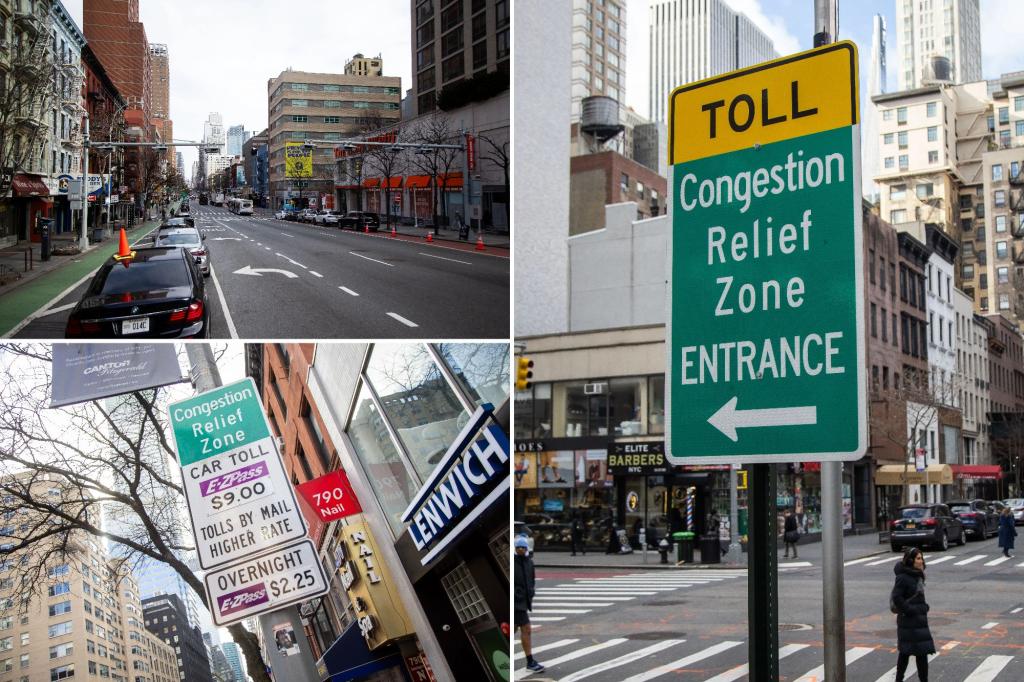The implementation of Manhattan’s congestion pricing plan, designed to reduce traffic and generate revenue for the Metropolitan Transportation Authority (MTA), has sparked controversy and concern over its potential impact on businesses and residents within the designated zone. While the immediate effect is on drivers entering the central business district south of 60th Street, the financial burden of the new toll is rippling outward, affecting even those who do not own or operate vehicles. Businesses operating within and serving the congestion zone are increasingly passing the cost of the toll onto their customers through surcharges, effectively expanding the toll’s reach beyond drivers.
Several businesses have already notified their customers of impending price increases to offset the cost of the $9 congestion fee. CompuVoip, a telecommunications company that contracts with New York City, informed its clients, including the City Council, that a “congestion pricing surcharge” will be added to service calls within the zone. This surcharge, they explained, reflects the increased cost of conducting business within the designated area. Similarly, Dream Events & Decor, a Long Island-based catering and event company, announced that it will incorporate the toll’s cost into its pricing structure. The company estimates the toll will amount to approximately $20,000 annually, a significant expense that will inevitably be passed on to clients holding events within the congestion zone. Mechanical East, a Brooklyn-based HVAC company, also forewarned its customers of a surcharge for all work orders within the zone last spring, demonstrating the proactive approach businesses are taking to mitigate the financial impact of the new toll.
The cascading effect of the congestion pricing toll has drawn sharp criticism from opponents who argue that it unduly burdens businesses and residents within the zone and exacerbates existing financial pressures. They contend that this “pass-along” cost is a predictable consequence of the congestion pricing scheme and further underscores its flawed design. Councilman Robert Holden characterized the toll as a “Congestion Scam Tax” that unfairly penalizes consumers and businesses operating within the central business district. He criticized MTA Chairman Janno Lieber and Governor Kathy Hochul for implementing a policy that he believes will exacerbate the financial strain on New Yorkers. Councilwoman Kristy Marmorato echoed these sentiments, highlighting the broader implications of the toll, predicting increased costs across various aspects of daily life. Hempstead Town Supervisor Donald Clavin, who has filed lawsuits challenging the congestion pricing plan, labeled the toll “Hochul inflation,” suggesting it will contribute to rising prices and further burden residents and businesses.
The decision by businesses to implement surcharges reflects the challenging economic environment and the need to adapt to new regulations. Faced with increased operating costs, businesses are often left with little choice but to pass these expenses on to their customers. This can lead to higher prices for goods and services, impacting consumers and potentially dampening economic activity within the congestion zone. The added cost of doing business within the zone may also discourage companies from operating there, potentially leading to a decline in economic vitality and a shift in business activity to areas outside the congestion zone. The long-term consequences of these shifts remain uncertain, but the initial response from businesses suggests a significant financial impact that could have broader ramifications for the city’s economy.
The practice of passing on the congestion toll cost raises questions about the fairness and equity of the policy. While the stated goal of congestion pricing is to reduce traffic and fund transportation improvements, the added burden on businesses and residents within the zone raises concerns about its distributional effects. Critics argue that the policy disproportionately impacts those who live and work within the zone, regardless of their driving habits. This raises questions about the fairness of imposing a cost on individuals and businesses who may not be directly contributing to the congestion problem the policy aims to address. The potential for increased costs for essential services like HVAC repairs and telecommunications further complicates the issue, raising concerns about affordability and access for those living and working within the congestion zone.
The implementation of congestion pricing in Manhattan represents a significant policy shift with far-reaching implications for businesses, residents, and the city’s economy. While the long-term effects are still unfolding, the immediate response from businesses suggests that the financial burden of the toll is being spread beyond drivers, impacting customers and potentially reshaping the economic landscape of the affected area. The ongoing debate surrounding the policy highlights the complex interplay between transportation, economics, and equity, raising fundamental questions about who bears the costs and benefits of such initiatives. As the congestion pricing plan continues to roll out, it will be crucial to closely monitor its impact on businesses, residents, and the broader economy to ensure that its objectives are achieved without undue hardship on those who live and work within the congestion zone. The success and sustainability of the policy will ultimately depend on its ability to strike a balance between addressing traffic congestion, generating revenue for vital transportation improvements, and minimizing the financial burden on those affected by its implementation.

